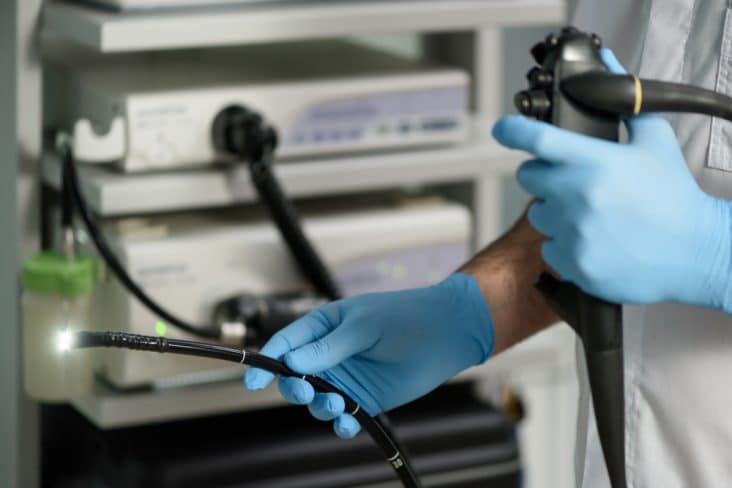An endoscopy is a medical procedure that helps your doctor take a closer look at your internal organs using an endoscope, a thin, flexible tube with a light and camera at the tip.
While the light at the tip of the endoscope illuminates the area the doctor wants to check, the camera captures images and projects them onto a screen for your doctor to see.
In some cases, your doctor may attach special instruments onto the tip of the endoscope to take samples of tissue, known as a biopsy, to further analyse your affected areas. Some attached instruments may be used to remove things such as polyps, fibroids or stones.
Overview
Your doctor may perform endoscopy for various reasons, including:
- To investigate the cause of certain symptoms such as abdominal pain, bleeding, swelling, nausea or diarrhoea.
- Using the images and a biopsy, your doctor may gather more evidence from your body to confirm a diagnosis.
- Your doctor may remove blockages and growth such as polyps, drain away excess fluid or open up narrow areas. An endoscopy may also be used to repair damaged cartilage, hernias, insert small devices to expand certain areas or remove small organs such as the appendix or gallbladder and remove cancer-affected regions.
- As a procedure to monitor a certain area after treatment or to review the progress of certain types of treatment.
There are a few types of endoscopy, categorised according to the part of the body examined. Depending on your medical condition and why you need the endoscopy, your doctor decides on which type of endoscopy is appropriate. The types of endoscopy include:
- Gastroscopy or upper endoscopy: The endoscope is inserted through the mouth to examine the upper part of the digestive tract, including the oesophagus, stomach, and the first half of the small intestine.
- Colonoscopy: The endoscope is inserted through the anus to examine the lower parts of the digestive tract, including the rectum and colon.
- Bronchoscopy: A bronchoscope is inserted into the nose or mouth and passed down the throat to examine airways and the lungs.
- Cystoscopy: A cystoscope is inserted into the urethra to examine the bladder.
Meals
Depending on the type of endoscopy, you may be advised to avoid eating certain types of food, sometimes, a few days ahead of the endoscopy. You will need to avoid eating or drinking anything on the day of your procedure.
Your doctor may advise you on how long you should fast and what food or beverages you need to avoid as preparation for the endoscopy. You may have to avoid drinking alcohol the day before and on the day of the appointment.
Medicine
Depending on your medical history and current health condition, your doctor may ask you to stop taking certain medication to ensure a successful endoscopy and recovery. This could include, for instance, a blood-thinning medication.
If you’re taking diabetes medication or insulin, you may need to discuss adjusting your dosage to accommodate diet restrictions and changes. On the day of the procedure, if you have any medication to take, drink them with just a sip of water.
Safety
An endoscopy is a minor procedure but you may be given a sedative or general anaesthesia depending on the specific procedure. You will need to be accompanied by someone or have someone take you home afterwards.
If you have an Automatic Implanted Cardiac Defibrillator (AICD) or pacemaker, you should inform your doctor in advance and provide a copy of the information card, on the day of the procedure.
Request more information on preparing for an endoscopy
Contact a team of expert gastroenterologists for more information on how you can prepare for an endoscopy to ensure a successful procedure and quick recovery.

